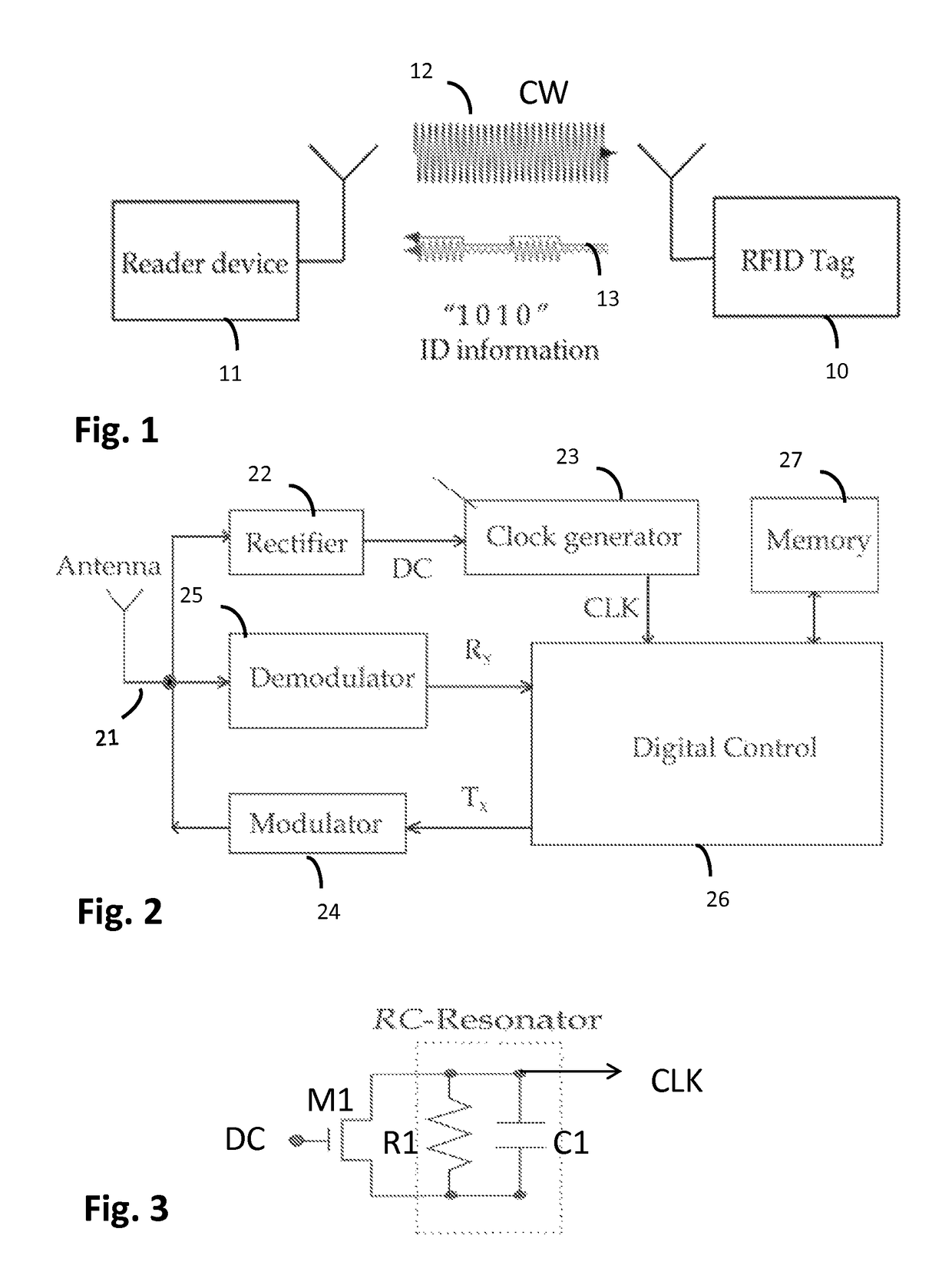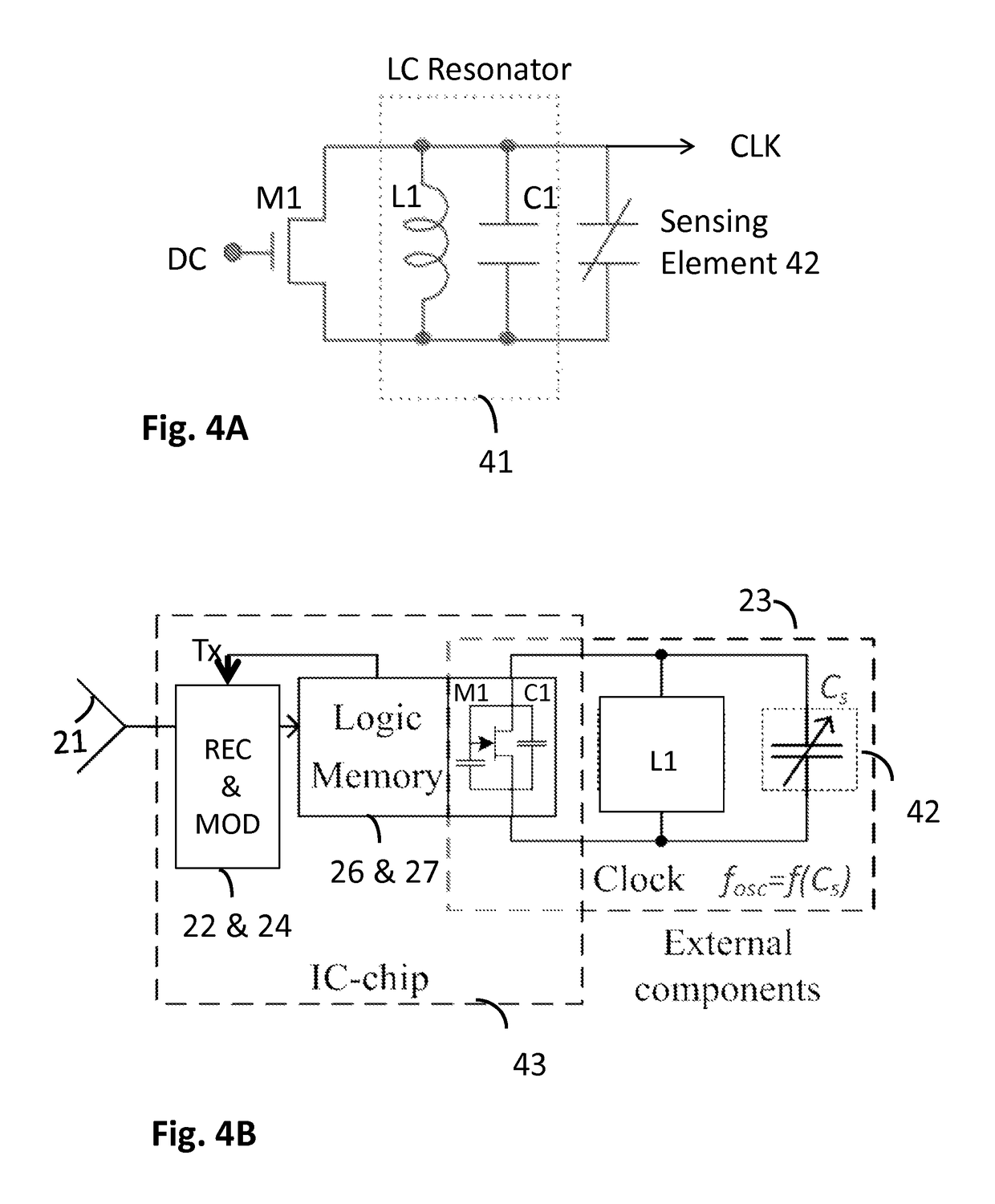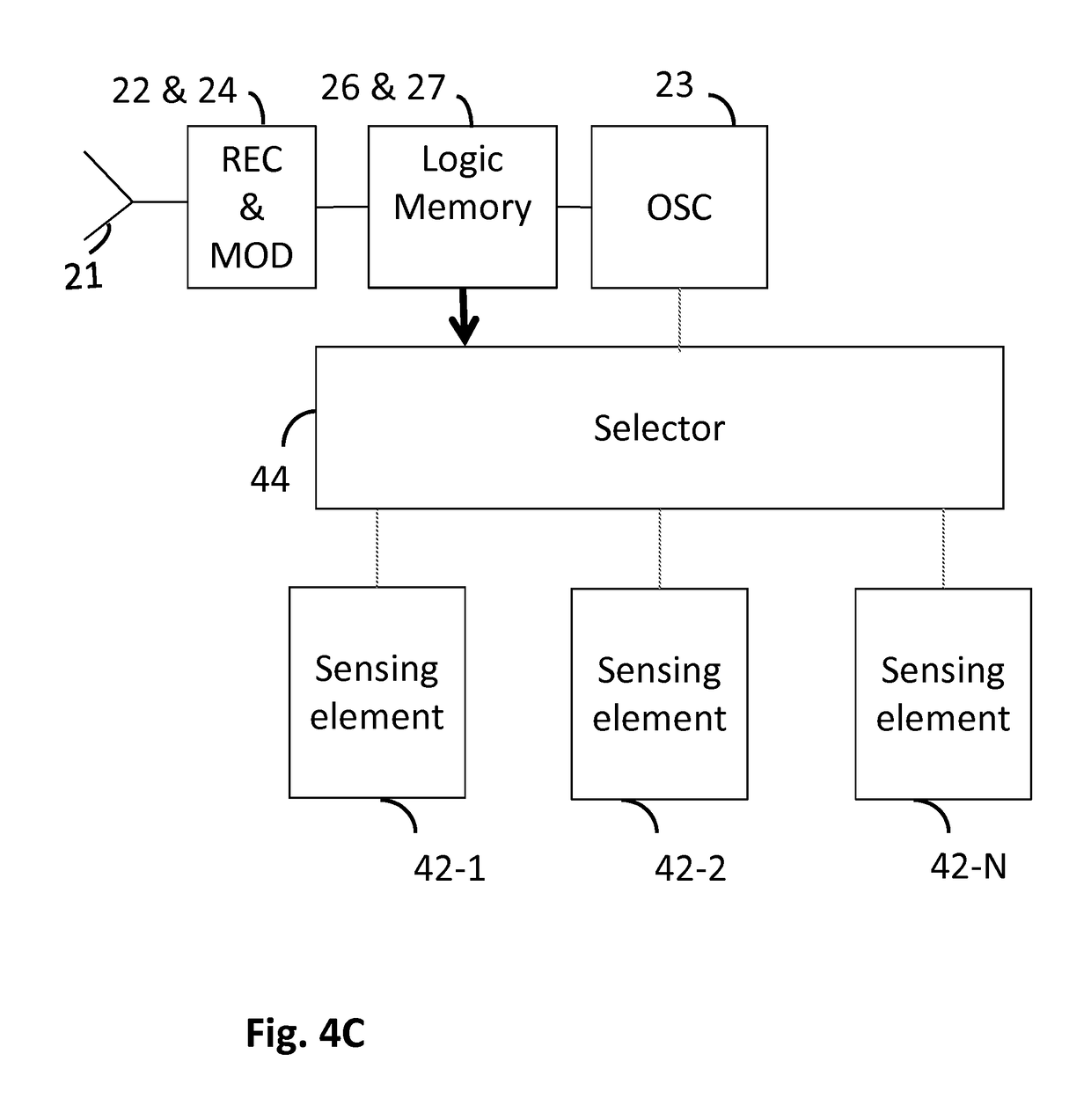Passive wireless sensor
a wireless sensor and wireless technology, applied in the field of passive wireless sensors, can solve the problems of limited read-out distance, limited lifetime, and limited lifetime of wireless sensors
- Summary
- Abstract
- Description
- Claims
- Application Information
AI Technical Summary
Benefits of technology
Problems solved by technology
Method used
Image
Examples
Embodiment Construction
[0043]FIG. 2 shows a functional block diagram illustrating an example of radio frequency identity (RFID) transponder (tag) architecture. In the illustrated example the RFID tag 10 may comprise an antenna 21 directly matched to the tag's front end impedance (matching circuit is not shown) to communicate with a RFID reader 11; an analogue RF front end that may typically contain rectifier circuitry 22 to convert RF power into a direct current (DC), a clock generator or oscillator 23, a modulator 24 and a demodulator 25. There may also be a logic part or a digital control module 26 that may be configured to provide desired functions, such as to handle interrogating commands, execute the anti-collision protocol, perform the data integrity check, run memory read-write operations, and perform output control and data flow. The logic implementation usually follows a defined standard and a certain associated protocol. Further, memory storage 27 may be provided. Depending on a user's requireme...
PUM
 Login to View More
Login to View More Abstract
Description
Claims
Application Information
 Login to View More
Login to View More - R&D
- Intellectual Property
- Life Sciences
- Materials
- Tech Scout
- Unparalleled Data Quality
- Higher Quality Content
- 60% Fewer Hallucinations
Browse by: Latest US Patents, China's latest patents, Technical Efficacy Thesaurus, Application Domain, Technology Topic, Popular Technical Reports.
© 2025 PatSnap. All rights reserved.Legal|Privacy policy|Modern Slavery Act Transparency Statement|Sitemap|About US| Contact US: help@patsnap.com



